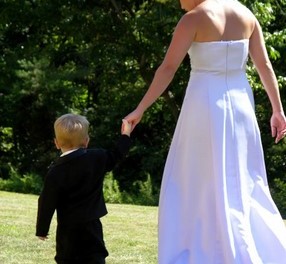Wedding etiquette is essential when it comes to letting the world know about your new upcoming marriage and the invitations that you send to your guests.
Getting this right really does set the stage for what your guests will think and feel about you for the next months.

Wedding Invitation Design
One of the first things to determine is how the wedding invitation will be set up.
Whose name goes first?
What happens when things are more than just a simple wedding?
The fact is that there are many questions that come up with the wedding invitation design.
First, here are a few etiquette friendly methods of writing an invitation:
• Start with the sponsor or the bride’s parents names. “Mr. and Mrs. Bob Smith” should be the beginning of the invitations.
• Follow this with, “ request the honor of your presence at the marriage of their daughter”
• Next, include the first names of the bride and the groom, “ Ann Marie to Mr. Adam Jones”
• Follow this with the date and time of the wedding followed by the location.
The invitation should also include the groom’s parents if both will be helping to pay for or sponsor the wedding.
The bride’s parent’s names should be first, followed by the groom’s.
If the bride and the groom are sending the invitations, their names should appear such as this:
Miss Ann Marie Smith
And
Mr. Adam Jones
Now, it gets a bit trickier when you add in the divorces and other complications.
To determine what the right way to design the wedding invitation is, remember this.
The parents that are issuing the invitations, sponsoring the wedding, paying for the wedding should have their name go first.
If you have more than one parent, start the invitation with the bride’s parents (father first) and then the groom’s parents second.
There are also special situations that can follow these rules such as brothers and sisters hosting the wedding, grandparents and many, many more.
The goal is to give proper respect to the individuals that are sponsoring the wedding first and foremost.
List the purpose of the invitation on it.
For example, this should be an invitation to the marriage of their daughter or, an invitation to the celebration of their daughter’s marriage for a reception only.
If there is no reception or only selected guests will be there, the invitation would be directed as an invitation for the ceremony of marriage of the daughter.




